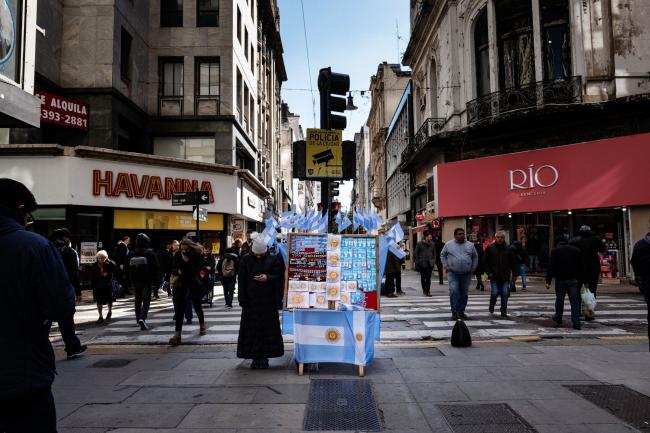(Bloomberg) -- Emerging market investors are piling back into safer asset classes as mounting trade tensions spell the end of this year’s clamor for yield.
Fears of global slowdown -- the fallout of Donald Trump’s trade war -- and the collapse of the Argentine market have dealt a blow to junk and local-currency bonds this month, the asset classes of choice for money managers looking to bolster their returns.
After outperforming for most of the year, high-yield dollar debt in emerging markets is poised to lose almost 4% this month, according to Bloomberg Barclays (LON:BARC) indexes. By contrast, lower-yielding investment-grade bonds in those same markets are on track for their longest stretch of monthly gains on record.
“Credit quality will matter, and I strongly prefer investment grade over high yield in emerging-market debt,” said Sergey Dergachev, senior portfolio manager at Union Investment in Frankfurt, who favors Indonesia, India, Egypt and Croatia. “I definitely see more volatility to come.”
Below are three charts that capture this pivot in the market, where the prospect of monetary easing to soften the blow of the trade dispute is supercharging demand for duration, driving investors into longer-dated debt sold by higher-quality issuers.
Safety Outperforms
The spread on monthly returns for the Bloomberg Barclays (LON:BARC) Emerging Markets Investment Grade Index and its high-yield counterpart has widened to more than 6 percentage points in August. That’s the biggest differential since October 2008, one month after the collapse of Lehman Brothers.
Even when adjusting for the blowout in bond spreads in Argentina this month, this measure holds at 5.9 percentage points, still the widest in more than a decade.
Leading the advance are bonds from Panama, Saudi Arabia and Qatar, according to Bloomberg Barclays (LON:BARC) indexes. Those issued by Argentina, Lebanon and Zambia, all given a CCC assessment by Fitch Ratings, were the hardest hit.
Duration Reigns
The out-performance is being compounded by the prospect for further monetary easing by the U.S. Federal Reserve. Since lower dollar funding costs give long-dated bonds a disproportionate boost, investment-grade issuers who are able to issue long-dated credit have gained the most.
Valuation Buffer
What’s more, by one measure at least, the bid for safety has room to run. The option-adjusted spread on the Bloomberg Barclays (LON:BARC) index of investment-grade debt in emerging markets -- a measure of yield above U.S. Treasuries -- is still trading within a range that has held over the past year and well above lows seen in early 2018.
In developing nations, “the balance of risks are skewed to the downside in the near-term,” said Patrick Wacker, a fund manager for emerging-market fixed income at UOB Asset Management Ltd. in Singapore. He prefers countries with “strong balance sheets” or improving fundamentals such as Russia, Qatar and Abu Dhabi.
(Updates price in seventh paragraph.)
